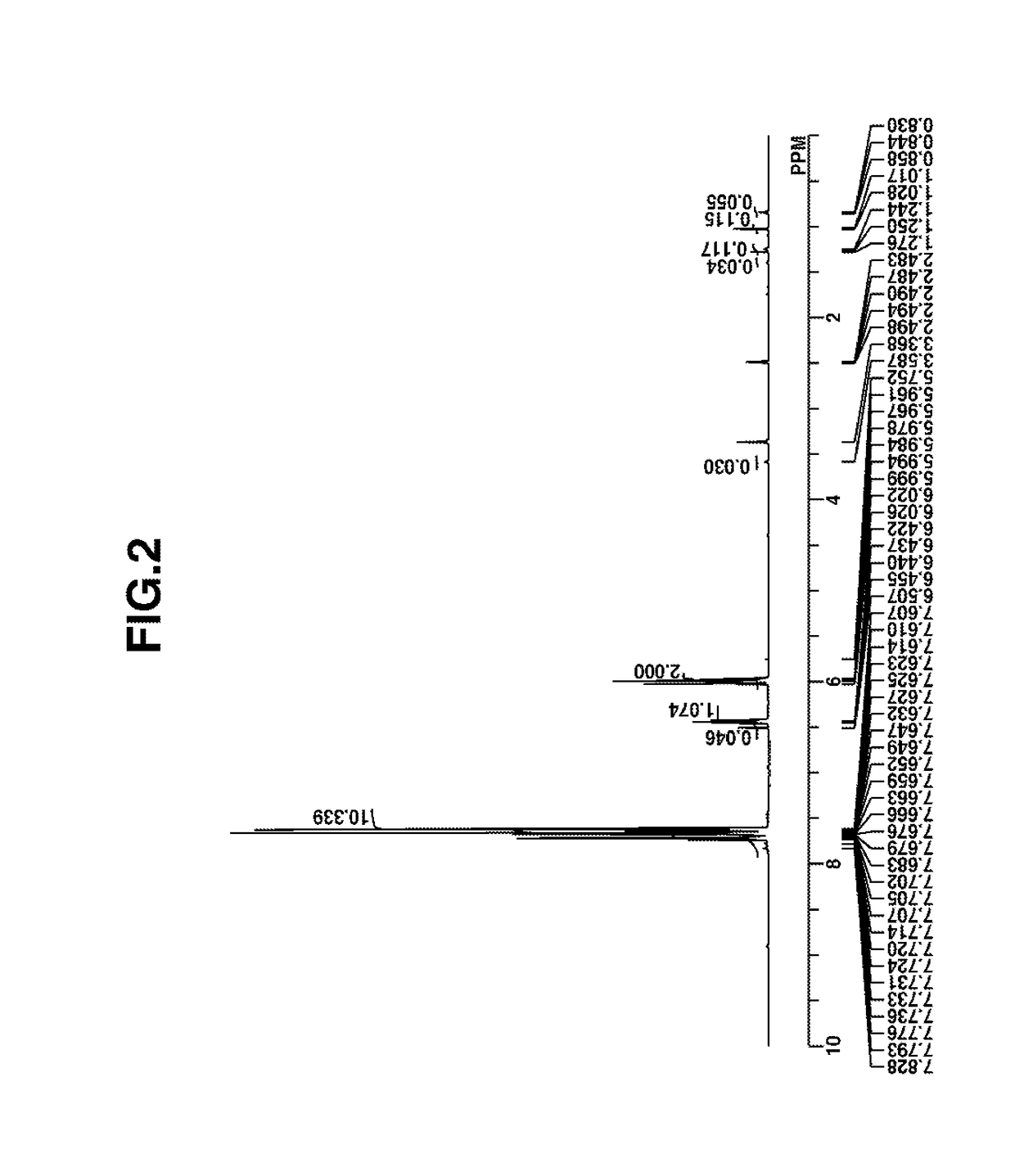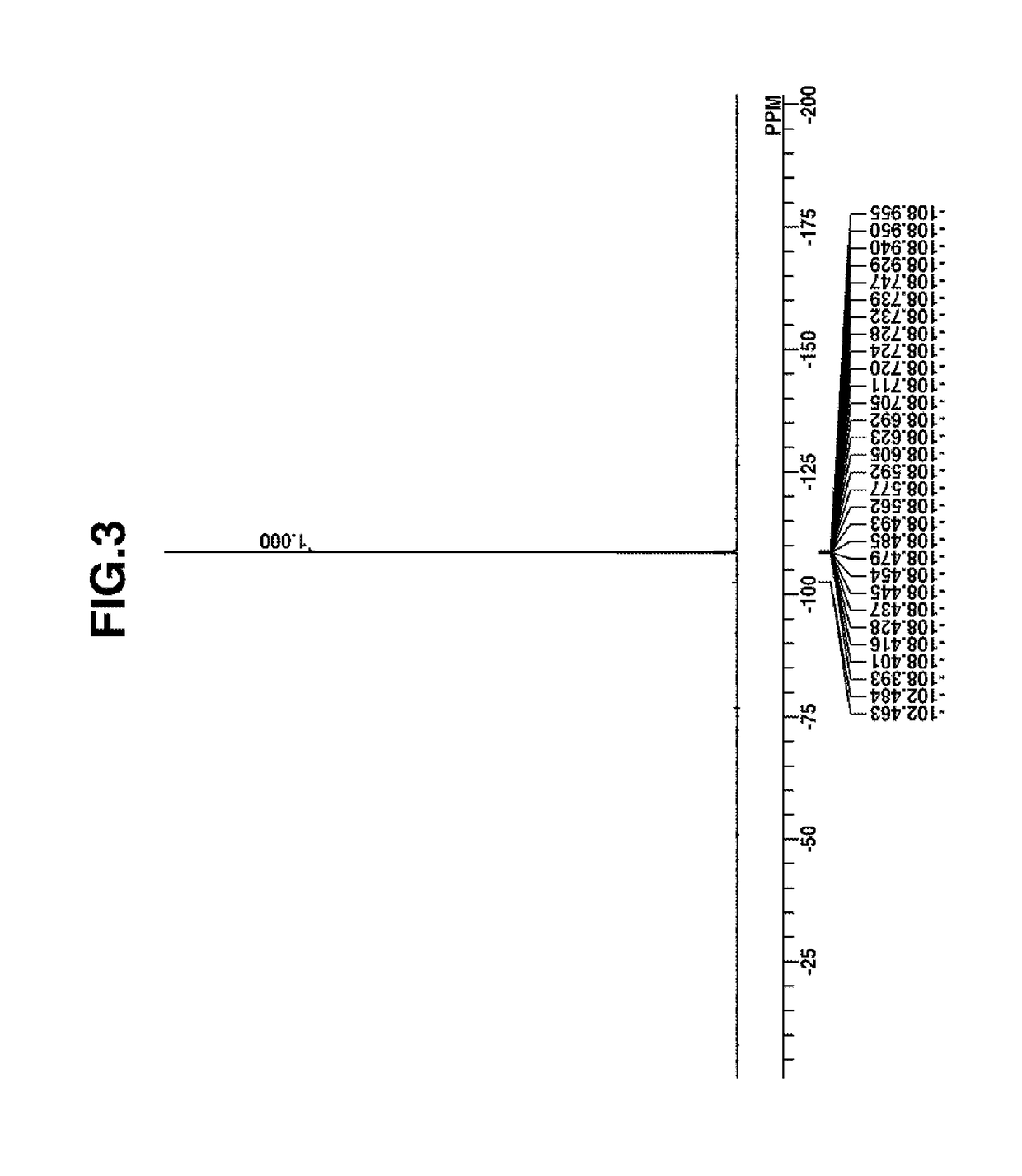Sulfonium compound, resist composition, and pattern forming process
a technology of resist composition and compound, which is applied in the direction of nmr measurement, basic electric elements, electrical equipment, etc., can solve the problems of reducing the lwr, mef and collapse resistance of resist materials, and still needs a substantially non-leachable resist material in water. , to achieve the effect of satisfying the function of acid diffusion control (or quencher) and good profil
- Summary
- Abstract
- Description
- Claims
- Application Information
AI Technical Summary
Benefits of technology
Problems solved by technology
Method used
Image
Examples
example 1-1
Synthesis of 2-(diphenylsulfonio)phenolate (Q-A)
(1) Synthesis of (2-tert-butoxyphenyl)diphenylsulfonium chloride (Intermediate A)
[0199]
[0200]A Grignard reagent was prepared by the standard technique using 2.6 g of magnesium and 16 g of 2-tert-butoxychlorobenzene in THF. To the Grignard reagent were added 6.1 g of diphenyl sulfoxide and 27 g of THF. At room temperature, 9.8 g of chlorotrimethylsilane was added dropwise to the mixture, which was aged for 3 hours. After aging, a saturated aqueous solution of ammonium chloride was added to quench the reaction. The reaction mixture was combined with 100 g of water and washed with diisopropyl ether, yielding an aqueous solution of the desired compound, (2-tert-butoxyphenyl)diphenylsulfonium chloride (Intermediate A). The solution was passed to the next step without isolation.
(2) Synthesis of (2-hydroxyphenyl)diphenylsulfonium tosylate (Intermediate B)
[0201]
[0202]Next, 6.8 g of p-toluenesulfonic acid monohydrate, 6.1 g of 25 wt % sodium hy...
example 1-2
Synthesis of 2-(diphenylsulfonio)-5-fluorophenolate (Q-B)
(1) Synthesis of 1-bromo-2-tert-butoxy-4-fluorobenzene (Intermediate C)
[0209]
[0210]Under heating at 50° C., 1 kg of 1-bromo-2,4-difluorobenzene was added dropwise to a solution of 553 g of potassium tert-butoxide in 4 kg of THF, which was aged at 50° C. for 20 hours. The reaction solution was concentrated in vacuum, after which 3.5 kg of hexane and 3 kg of pure water were added to the concentrate. The organic layer was separated, washed with water and thereafter concentrated in vacuum. Methanol was added to the concentrate for recrystallization. The resulting crystal was recovered by filtration and heat dried in vacuum, obtaining the desired compound, 1-bromo-2-tert-butoxy-4-fluorobenzene (Intermediate C) (amount 815 g, yield 66%).
(2) Synthesis of (2-hydroxy-4-fluorophenyl)diphenylsulfonium tosylate (Intermediate D)
[0211]
[0212]A Grignard reagent was prepared by the standard technique using 72 g of magnesium and 741 g of Interm...
example 1-3
Synthesis of 2-(4-tert-butylphenyl)(phenyl)sulfoniophenolate (Q-C)
(1) Synthesis of (4-tert-butylphenyl)(phenyl)sulfide (Intermediate E)
[0218]
[0219]To a mixture of 130 g of 2-iodophenol, 11.3 g of copper iodide, and 520 g of N-methylpyrrolidone, 104 g of benzenethiol was added dropwise. Under heating at 110° C., 138 g of diisopropylethylamine was added dropwise to the mixture, which was aged at 110° C. for 13 hours. The reaction solution was combined with 708 g of 10 wt % sodium hydroxide aqueous solution and washed with 3.9 kg of hexane. Then 186 g of 35 wt % dilute hydrochloric acid was added, and 1.3 kg of ethyl acetate added. The organic layer was separated, and washed with saturated ammonium chloride aqueous solution and then with water. The organic layer was concentrated in vacuum. The concentrate was distilled under reduced pressure, obtaining the desired compound, (4-tert-butylphenyl)(phenyl)sulfide (Intermediate E) (amount 106 g, yield 88%).
(2) Synthesis of 2-(4-tert-butylph...
PUM
| Property | Measurement | Unit |
|---|---|---|
| refractive index | aaaaa | aaaaa |
| feature size | aaaaa | aaaaa |
| dispersity | aaaaa | aaaaa |
Abstract
Description
Claims
Application Information
 Login to View More
Login to View More - R&D
- Intellectual Property
- Life Sciences
- Materials
- Tech Scout
- Unparalleled Data Quality
- Higher Quality Content
- 60% Fewer Hallucinations
Browse by: Latest US Patents, China's latest patents, Technical Efficacy Thesaurus, Application Domain, Technology Topic, Popular Technical Reports.
© 2025 PatSnap. All rights reserved.Legal|Privacy policy|Modern Slavery Act Transparency Statement|Sitemap|About US| Contact US: help@patsnap.com



